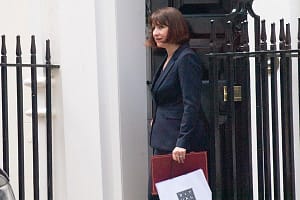The British borrowing boom has begun, as the cost of living crisis forces people to put more on credit cards and take out loans just to pay their bills. In June we saw the nation borrow £1.8bn – almost double the pre-pandemic average and double the level of borrowing we saw in the previous month.
Laura Suter, head of personal finance at AJ Bell, comments on the latest Money and Credit data from the Bank of England: “Of that huge sum of borrowing an extra £1bn was put onto credit cards, marking the largest annual growth in credit card lending in almost 17 years. The saving grace for many turning to debt is that interest rates haven’t leapt up yet, despite the Bank of England hiking the Base Rate. We saw the average debt interest on credit cards rise between May and June, to hit 18.56%, however that average rate hides the fact that some will be able to borrow on 0% deals and others will being hit with far higher interest rates.
“What’s worse is that these figures are just the tip of the iceberg. Once the energy price cap shifts up again in October and we all use more energy in winter, these figures will keep climbing. What’s more, while some people may still have savings to fall back on now, as they are exhausted more people will have to turn to debt.
“The UK’s savings boom is also dwindling, and the amount saved dropped to its lowest level in more than five years as people don’t have anything spare to put away once they’ve paid the bills. In June the amount we saved as a nation slumped to less than a third of the levels seen only a month earlier, with households putting away £1.5bn, compared to £5.2bn in May.
“Those who are still able to save money were rewarded with an increase in interest rates, with the fixed-rate savings market having a boom in competition that drove average rates up from 1.25% to 1.58% in the space of a month. Average rates on three-year bonds have risen to their highest in seven years, while two-year bonds are at an eight-year high. Average interest rates on easy-access accounts ticked up slightly, to 0.21%, but this figure will include hordes of people who have their money sitting in accounts paying no interest.”
Mortgages:
“There’s signs of a slowdown in the UK housing market, with new borrowing dropping by almost £3bn in June compared to May. This is still above pre-pandemic levels but it’s a significant drop from the £16.7bn of net lending we saw in June last year, as people rushed to get deals done before the end of the stamp duty holiday.
“Approvals for future lending, which give an indication of the health of the market in the months to come, have fallen again and are below the pre-pandemic average for the third month in a row. As the cost of living crunch bites some people may reconsider taking on more mortgage debt, while the cost of mortgage debt has also risen. What’s more, anyone who is house-hunting at the moment will know that even if you want to buy a house the availability of homes to buy is frustratingly low.
“The era of rock-bottom mortgage rates is over, as we saw average rates rise by another 20 basis points in June, to 2.15%. A three-year fix at 75% loan-to-value is now 2.97% compared to 1.66% in June last year – a significant leap in borrowing costs, particularly for those with larger mortgages.”





Leave a Comment